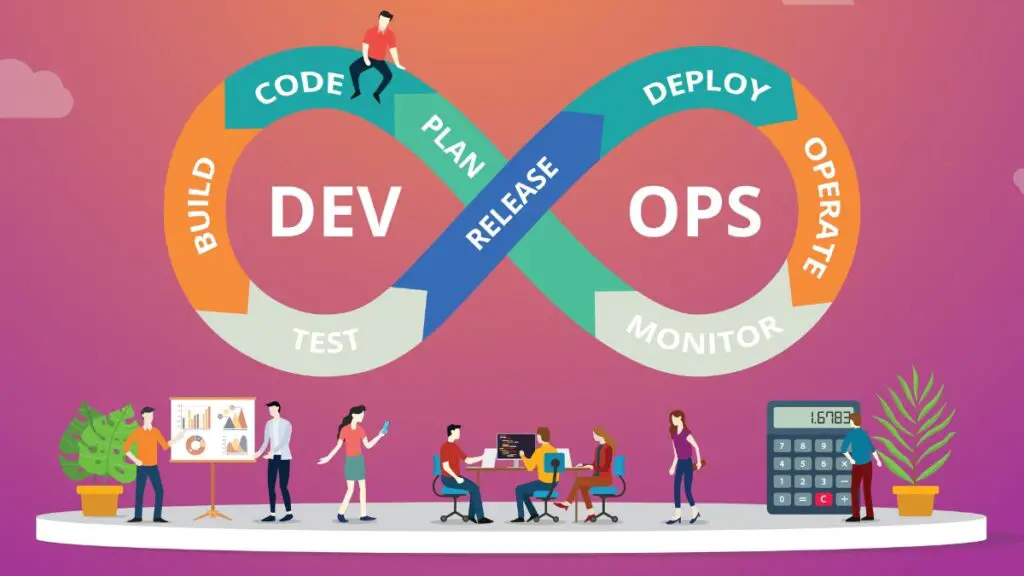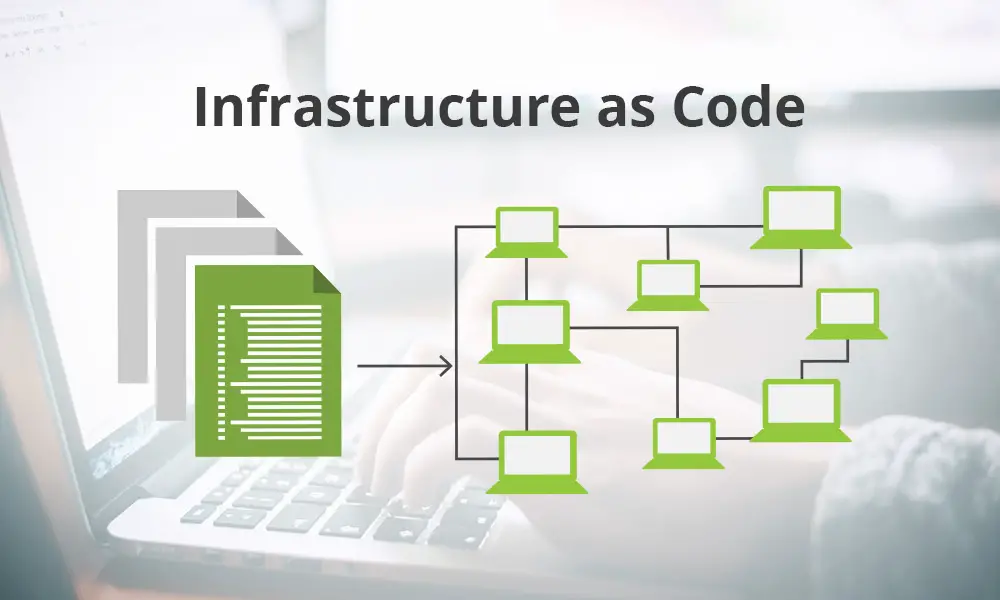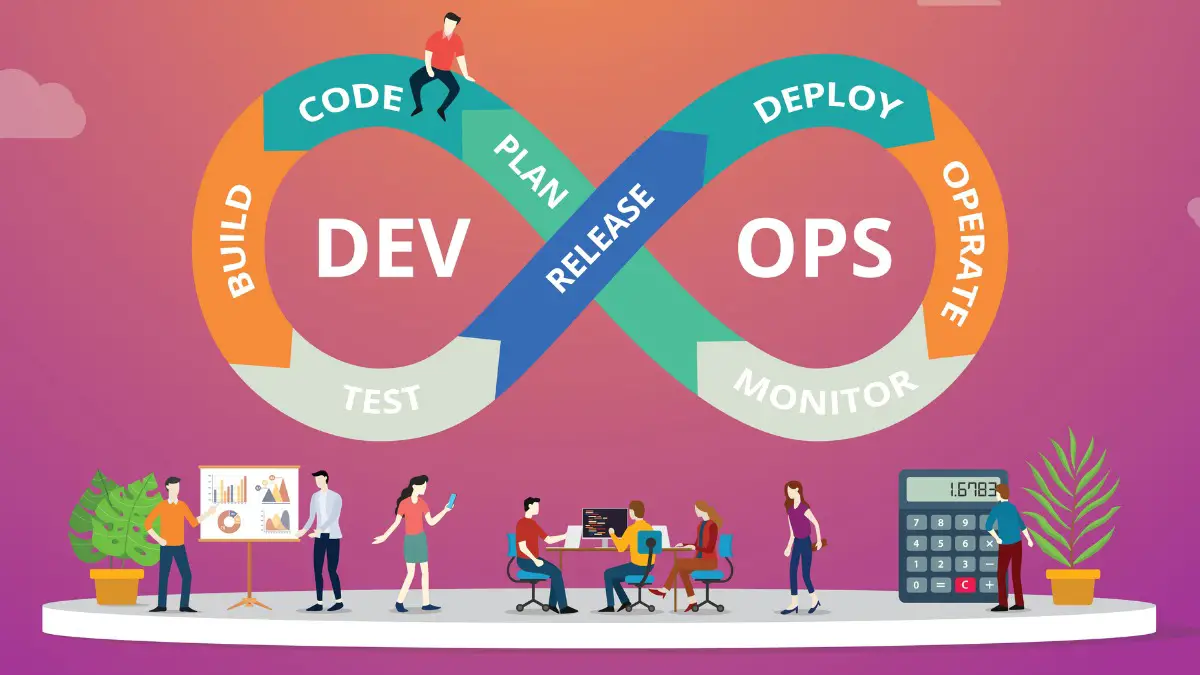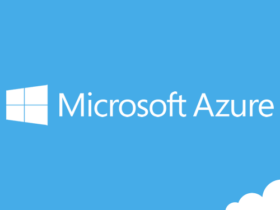

Best 15 DevOps Trends That Will Play A Key Role in The Future
COVID-19 pandemic has impacted people’s lives like never before. Many businesses came to a standstill. However, the online world didn’t stop. The global situation opened many new opportunities. Developers and programmers started trying out new products and technologies. People couldn’t have continued work, socialize and learn without the IT leaders and everyone. DevOps team of every business turned out to be pretty valuable at that time. They maintained crucial communication and operations between all team members remotely. Like all others, the year 2020 has also bounded DevOps engineers to develop new processes and methods. The situation gave birth to several new DevOps trends. We will be giving you an idea about the changes and flourishment that every DevOps team went through in the previous year and continuing this year.
Top DevOps Trends
DevOps is all about continuous development, and many trends are evolving and becoming more widespread this year. So, to survive in this fast enhancing field, it’s essential to know what’s on the horizon. Don’t worry! We got you covered. We have listed 15 trends that DevOps teams around the world are working with.
1. Infrastructure as Code (IaC)
Infrastructure as Code is a process of managing infrastructures in the cloud. The entire system is decentralized and controlled in the cloud. Due to its numerous features, it has become a current DevOps trend. As a matter of fact, IaC is a vital DevOps technique that operates in accordance with continuous delivery.
The infrastructure in IaC are virtual machines, networks, servers, storage devices both in the premises and cloud, and IaC handles them by configuration files. An IaC model generates the same framework every it is utilized.

Moreover, IaC has a version control system. It allows the DevOps teams to revert to the previous configuration in the event of a failure. This results in a faster recovery and less offline period. Some of the main advantages of IaC include building a proper infrastructure from a script in a short period of time, traceability, high efficiency, accountability, and consistency in implementing the same configuration.
IaC could easily fix the ‘environment drift’ issues in the release pipeline. Without IaC, teams are responsible for maintaining the configurations of each deployment environment, which is not an easy task. One can easily say that IaC has helped DevOps to make the usage convenient.
2. DevSecOps
Security is a vital issue in DevOps now. With the increase of data breaches and the increased focus on data protection regulations such as PSD2 and GDPR in the United States and around the world, the DevOps sections of companies are bound to take data security seriously. The burning security issue made DevSecOps a rising trend.
The ‘sec’ part actually refers to security. Everything is moving to the cloud nowadays. The cloud environment is comparatively easy for hackers to breach. So, DevOps teams require new tools and plug-ins for handling the security measures, and DevSecOps has it all.
App and infrastructure security are the main aspects of DevSecOps. Not to mention, DevSecOps will automate security and guide the way to stable and dependable infrastructure protecting the setups from threats and cyber-attacks.
It aids businesses in ensuring that software meets all security standards, implements safety measures from the beginning of growth, fosters closer security collaboration between teams, and standardizes security with the most up-to-date tools and techniques at all levels.
DevSecOps teams guarantee that security is inserted into every level as safety codes, allowing any security flaws or bugs to be identified and taken care of quickly. Thus, DevSecOps is the new future of DevOps security.
3. AI and ML in DevOps
The next age is the age of AI. AI will cause the fourth industrial revolution. There is not a single area of technology that AI and ML haven’t affected. The same is in the case of DevOps. DevOps engineers have utilized AI techniques to get improved outcomes. With the assistance of AI, they can now solve problems much efficiently.
These technologies broaden the abilities of software systems that are now ubiquitous in our lives. Photo captioning, digital assistance, banking services, facial recognition, product recommendation, and every other thing you can think of.

It’s not the algorithms or technologies that make incorporating AI or ML into a framework challenges. The job at hand is to bring the concept into production and keep it tenable and operational. Luckily, AI/ML models are being integrated with business models and can automate DevOps services and solve complicated problems.
The integration of CI/CD with AI/ML has especially turned out to be pretty valuable. The models produced by their integration provide results over a long period of time rather than a one-time result. All these features have made AI a DevOps trend in 2021, and developers are applying it to their design and development.
4. GitOps
The development process necessarily involves the use of software and tools that developers are familiar with. DevOps uses developer tools and equipment to manage services, which can be referred to as GitOps. GitOps is a method to de simultaneous delivery. Besides, it can be said, and it is an operational process for creating Cloud Native software that consolidates management, deployment, and monitoring.
Moreover, it operates by using Git as an arbiter of facts for concise infrastructures and applications. Furthermore, when updates are pushed and accepted in Git, automated CI/CD pipelines deploy improvements to your infrastructure.
It also uses various tools to determine the current level of production to the source control and notifies you when there is a discrepancy. The main objective of GitOps is to improve the performance so that the DevOps team can make modifications or upgrades to composite applications running effectively and reliably.
Presumably, every Continuous Deployment system intends to make deployment quicker and enable you to deploy regularly. However, if you use GitOps, you don’t have to change tools for application deployment, and it makes GitOps special in some cases. Besides, it has many other attributes which are attracting DevOps developers towards it.
5. Rising Automation in DevOps
DevOps is functioning on the dogma of “Automate Everything.” Automation in DevOps intends to boost the intensity of software delivery, speed up market access and refine workflow, agility, minimize lead time, flexibility, etc. Deployment, building, monitoring, whatever may it be, automation in DevOps enhances the speed of everything.
It has become a vital tool in DevOps because it reduces errors caused by human ignorance. This DevOps trend is significant in providing the ultimate benefit to the customer. In fact, automation that is simpler, reproducible, customizable, and dependable is critical to the triumph of any project.

As a matter of fact, the whole DevOps pipeline consisting of continuous deployment, continuous integration, and continuous testing, including monitoring the output of software in real-time, is automated. Automating system configuration and specification and software integration are the standard cognitive of DevOps practice.
DevOps practice is hugely reliant on automation to make deployments within a few hours and make regular deliveries across systems. Besides, developers want to decrease their engagement in basic routine tasks and use their space and intellect to do something original or innovative. Thus, the use of automation in DevOps is increasing day by as it saves time and makes the whole process trouble-free and efficient.
6. Cloud Native Environment
Cloud-native computing is an emerging technology used to create software that efficiently utilizes the cloud computing system. Cloud-native apps concentrate on how apps are developed and services that are implemented as Microservices and handled via DevOps processes. This new trend has resulted in increased market creativity and transition.
Moreover, Cloud-native computing enhances configuration and infrastructure. The majority of IT companies are adopting this technology, built on various approaches such as Microservices. According to the CNCF, the use of cloud-native technology has increased by a factor of two.
In the past ten years, cloud space has evolved quite much, and containerization has become a trend. It has inspired DevOps engineers to incorporate cloud-native with DevOps processes. This resulted in the golden age of software development. DevOps and cloud-native computing have become a trend.
The approach has solved many IT problems and made many methods convenient. They together have achieved a lot of goals. Cloud-native applications do make a massive change in operating, building, and deploying systems. Using cloud services means delivering distinct and interchangeable features that combine in well-defined ways using flexible and versatile components like containers.
7. Increased use of Kubernetes
The use of Kubernetes in companies has become a recent DevOps trend. Kubernetes is a container processing framework that can manage containerized workloads, scaling, services, and deployment. The year 2020 saw a rise in Kubernetes demand, and the year 2021 will see even more. It has begun to emerge as the best choice for businesses to handle software distribution.
The key explanation for this is that it has the potential to improve cloud-based systems using container-based Microservices. The use of APIs in Kubernetes has risen in recent years, and there is a decrease in the infrastructure needed due to the use of a containerized component of the server in the cloud.
When running an app in a cluster of machines, issues often occur when the side environments are not similar. For example, if you run a part of an application with one version of python but the other part with another version of python, problems may arise. A container easily solves the issue.
They encapsulate the complete programming interface, from the program and libraries to the configuration files, enabling applications to run efficiently on a desktop, in a data center, or a private cloud. However, if you want to control containers in a cluster, you will need special tools. That is where Kubernetes come in. It automates the whole process making it convenient for the developers.
8. AgileOps
AgileOps embodies a set of known Agile and DevOps techniques that I&O utilizes extensively to enhance agility. I&O teams can concentrate on DevOps, Agile methods, scrum, lean processes, and quality improvement to help product creation and refine product management strategies. Moreover, developers use Agile methods to manage software development.
There is a mainstream method called the Waterfall method. However, it has many drawbacks. AgileOps process has overcome these drawbacks. That’s why AgileOps will be an in-demand DevOps trend in 2021 due to its speed in reacting to customer requirements in real-time.
Every IT firm practices a software development approach to produce software. The client generally has many things to ask, and sometimes he can change his demands for the project in the middle of development. AgileOps plays a vital role in mitigating the gap between the engineers and the client.
Besides, it ensures that the program meets both the business and functional specifications. The technical configuration contains the performance capabilities of the software modules. It enables developers to make some adjustments during the development process in response to changing requirements. Furthermore, the AgileOps method helps develop processes, such as testing, building, coding, deployment, etc.
9. Chaos Engineering Becoming More Important
Chaos Engineering is likely to become common and significant to the DevOps community. It is basically the practice of conducting experiments on a live software system to gain trust in its ability to withstand chaotic and unpredictable conditions. At present, many organizations don’t use it, but it is gaining widespread popularity day by day.
If we consider the whole DevOps process as a model with five levels, then Chaos Engineering would be in the fourth level. It has to be done to test the software more efficiently. Traditional testing systems cannot detect bugs and flaws. However, the capacity to withstand any unlikely condition is another thing. This is what Chaos Engineering does.
Software systems are increasingly changing and becoming more complicated day by day. The complexity of architecture, applications, networks, and storage is increasing exponentially, making systems highly vulnerable to failure. Modern distributed systems are synonymous with a slew of unexpected malfunction events that are hard to track at all points of failure.
You can monitor the whole process in this case, but it’s not enough. We need to understand what is going on with the system. We have to be prepared for any type of failure. All of these features are available in Chaos Engineering, and that makes a DevOps trend.
10. Predictive Analysis with BizDevOps
BizDevOps is an emerging platform in software development where developers, operations, and business teams work together for the betterment of the company. In the past, all these teams worked solo. The development team created the code. The operations team handled the code. The business management team observed the key indicators for product success and collected data to develop the product further.
However, the BizDevOps breaks the shackles of these solo works and produces a new platform for software development. In this method, the business team contributes side by side with the DevOps team.
Real-time analytics is one of the innovations powering the BizDevOps trend. Companies can now receive data about software performance, and end-user actions immediately using application performance management and analytics software and measure how well it serves the business’ KPIs. Previously, it was hard to get information from every nook and corner.
However, due to the involvement of business teams, it is now possible to get data about any granular feature. Besides, the method will enhance automation, particularly in maintaining quality and testing. BizDevOps enables flexibility and increases the speed of work, giving teams the capability to detect bugs and fix them in no time.
11. Serverless Computing
Function as a Service is another term for serverless computing. Serverless architecture is becoming more common in the DevOps community as a critical future element. It differs from conventional hosting services, which include the maintenance and management of servers.
The serverless technology pioneers such as Microsoft Azure, Google Cloud Platform, Amazon Web Services provide fast deployment, increased scalability, and improved efficiency and user experience at a low cost. This technology will have a positive impact on DevOps, and the coming year will see its magic.
When an enterprise is on the edge of transitioning from a conventional IT framework to a Serverless Architecture, the Agile DevOps team may assist them, particularly in the early stages when IT assistance is required. The DevOps team is concerned with limited maintenance work after the switch to the serverless platform.
The only way to effectively achieve the migration process is to use DevOps. Serverless computing decreased maintenance effort and cost to a minimum level. It has caused serverless architecture to be a DevOps trend on the rise.
12. Low Code DevOps Going Strong
Low-code creation aims to produce high-quality software with the minimal possible amount of coding effort. It’s perfect for fast business deals, and the demand for it is only going to grow. It is simple for developers to create software with drag-and-drop elements and a proper user interface.
Low code DevOps actually depends on the fundamentals of visual programming, model-driven design, and automated code generation. The incorporation of low-code development and DevOps would help accelerate production while easing team collaboration. It will establish a user-friendly environment, and new technologies will help developers make the most technological advancements.
13. Go Language Rising with DevOps
The Go programming language, which is supported by Google, has seen a significant increase in developer adoption. It is becoming more popular in the DevOps community due to its unique attributes such as open-source design, decent vocabulary, and lightweight. Several DevOps tools make extensive use of the Go programming language.
Moreover, the language is quite handy in the serverless computing system. It focuses on high-end outcomes and provides solutions that are simpler and more accurate. Go is thought to be the best language for cases where dependencies aren’t a problem.
The language goes well with the DevOps environment due to the features such as high efficiency, easy syntax, community assistance, Go routines, fast compilation, inbuilt garbage collection, etc.
14. Security: a Primary Concern
Security is a major concern everywhere. DevOps is not an exception. Both of them have begun to prioritize each other. And, in the future, there will be more incorporation between the two. Security will notice more engagement of DevOps, and DevOps will encounter increased security features in its application.
The importance of security has enhanced in the passage of time and will be an inevitable component of the entire application process. DevOps aids in establishing safety protocols, regulations, and infrastructure, so incorporating it into the development of security protocols is important.
In the future, both of them will be combined to get a better security result. Each stage of the software development process, including deployment and testing, will be subjected to strict security checks. So, maintaining security and making new tools for this is a major DevOps trend now.
15. Service Mesh Implementation in DevOps
The service mesh is progressively being used as an optimized software infrastructure layer for exchanging information within services in the DevOps setting. These service meshes assist in completing several tasks that would otherwise be completed by the teams themselves.
It covers several attributes such as load balancing, authentication, encryption, and authorization. This makes it easier for teams to perform their daily tasks and saves valuable time and resources. Moreover, service mesh guarantees that interaction between containers is accessible, fast, and affordable while at the same time providing some key features.
Again, we know that microservices are good in doing this type of job. But there is a risk in using it in complex architectures and service-to-service communication. On the contrary, mesh services provide a robust environment in microservice communication. Thus, the use of service mesh is increasing.
Finally
A trend is basically an approach or technique that most of the experts of that era are using. If any individual or business wants to improve and go with the technological advances, they have to follow the ongoing trend.
The same is the case in the case of DevOps. The field is enhancing day by day. Developers are following newer trends to cope up with the current pandemic situation. A company has to embrace these trends and choose the right one to reach the pinnacle of success.
To let you know about the current DevOps trends, we have listed the top 15 of them. We hope the article was helpful and filled with the necessary information. You should have learned a lot of things from this article and inspired to gain more. Let us know your insight about the article in the comment section.





















Leave a Reply